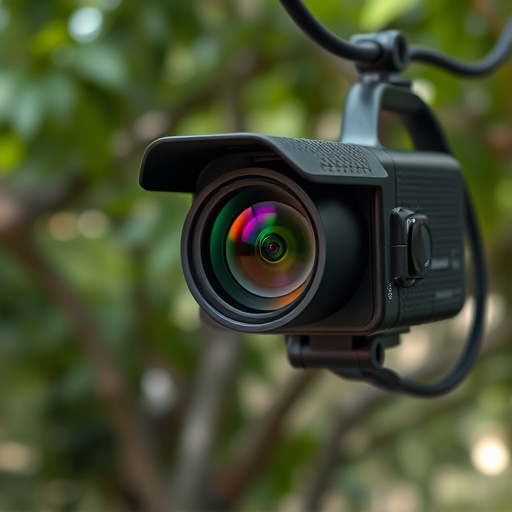Identifying hidden cameras that resemble everyday objects is a critical skill for professionals conducting counter-surveillance sweeps. They use advanced tools like thermal imaging and UV lights to detect devices disguised as pens, clocks, or light bulbs. A systematic search methodology, including room-by-room inspections and scrutiny of common objects, ensures thorough coverage. Experts stay informed about technological advancements, focusing on heat signatures and analyzing lighting/reflection to uncover sophisticated cameras. A multi-layered approach combining technical inspections and employee awareness training is recommended for robust defense against hidden cameras threatening privacy and data security.
Counter surveillance sweeps are crucial in today’s digital era, where hidden cameras disguised as everyday objects have become increasingly sophisticated. This professional methods guide delves into identifying common types of these natural-looking hidden cameras and provides strategic approaches for conducting comprehensive counter surveillance sweeps. We explore advanced tools and techniques to detect concealed devices and share best practices for safeguarding against unsuspected surveillance threats.
- Identifying Common Hidden Camera Types That Look Natural
- Strategies for Conducting a Comprehensive Counter Surveillance Sweep
- Professional Tools and Techniques to Detect Cameras Disguised as Everyday Objects
- Best Practices for Safeguarding Against Unsuspected Surveillance Devices
Identifying Common Hidden Camera Types That Look Natural
Identifying hidden cameras that look natural is a critical skill for professionals conducting counter-surveillance sweeps. These devices are designed to blend into their surroundings, making them nearly invisible to the untrained eye. Common types include miniature cameras disguised as everyday objects like pens, clocks, and even light bulbs. Their small size and realistic appearance allow them to be placed almost anywhere without raising suspicion.
Professionals must stay updated on the latest technological advancements in such devices. Knowing where to look and what to consider is essential. For instance, odd placements, like a clock positioned at eye level or a pen with an unusually smooth surface, might hint at a hidden camera. By understanding these subtleties, counter-surveillance experts can thoroughly inspect environments, ensuring the safe removal of any natural-looking hidden cameras.
Strategies for Conducting a Comprehensive Counter Surveillance Sweep
Conducting a comprehensive counter surveillance sweep requires a strategic approach to identify and mitigate hidden cameras that look natural. The first step is to conduct a thorough inspection using specialized equipment, such as thermal imaging cameras, UV lights, and metal detectors. These tools can help detect infrared signals, invisible light, and metallic components often associated with covert recording devices. Additionally, professionals should pay close attention to areas that are easily overlooked, like clock radios, smoke detectors, and doorbells, which can be disguised as hidden cameras.
To ensure maximum effectiveness, a systematic sweep is essential. This includes methodically searching each room, checking all angles and surfaces, and paying special attention to high-risk areas like offices, conference rooms, and bedrooms. It’s crucial to document every step of the process, noting any suspicious devices found and their exact locations. By combining advanced technology with meticulous inspection techniques, professionals can uncover even the most sophisticated hidden cameras that look natural, providing a comprehensive counter surveillance solution.
Professional Tools and Techniques to Detect Cameras Disguised as Everyday Objects
In the world of counter surveillance, detecting hidden cameras that look natural is a specialized skill set. Professionals employ an array of advanced tools and techniques to uncover these covert devices. One common method involves using specialized infrared cameras that can detect heat signatures, helping to identify electronic components often found in hidden cameras. These tools are particularly useful in low-light conditions, enabling experts to see beyond the visible spectrum.
Additionally, professionals leverage their knowledge of everyday objects commonly used as camera disguises, such as smoke detectors, light bulbs, or even fake rocks. By understanding the unique visual and thermal signatures of these items, they can quickly assess whether a seemingly innocuous object is housing a hidden camera. This expertise allows them to conduct thorough sweeps, ensuring that no device goes unnoticed, thereby providing a comprehensive counter surveillance solution.
Best Practices for Safeguarding Against Unsuspected Surveillance Devices
When it comes to safeguarding against unexpected surveillance devices, professionals recommend a multi-layered approach. The first line of defense involves conducting thorough inspections using specialized equipment designed to detect hidden cameras that look natural. These devices can identify subtle anomalies in lighting, reflections, and other visual cues that might indicate the presence of covert recording equipment. Regular and routine checks in high-risk areas, such as conference rooms, bathrooms, and common areas within buildings, are essential practices.
In addition to technical inspections, best practices also emphasize staying vigilant and conscious of one’s surroundings. Training employees or individuals at risk to recognize potential surveillance devices, like pinhole cameras or audio recorders disguised as everyday objects, can significantly enhance security. Encouraging a culture of awareness and open communication fosters an environment where anyone can report suspicious items or activities without hesitation. Combining these proactive measures with advanced technology ensures a robust defense against hidden cameras that might compromise privacy and data security.
In the age of advanced technology, the threat of hidden cameras that look natural poses a significant concern. This guide has equipped readers with valuable insights into identifying and countering such devices. By understanding common camera types, implementing effective sweep strategies, and utilizing professional tools, individuals can now proactively protect their privacy. Adhering to best practices for safeguarding against unexpected surveillance is crucial in today’s digital landscape. Stay vigilant, stay informed, and take control of your security.
